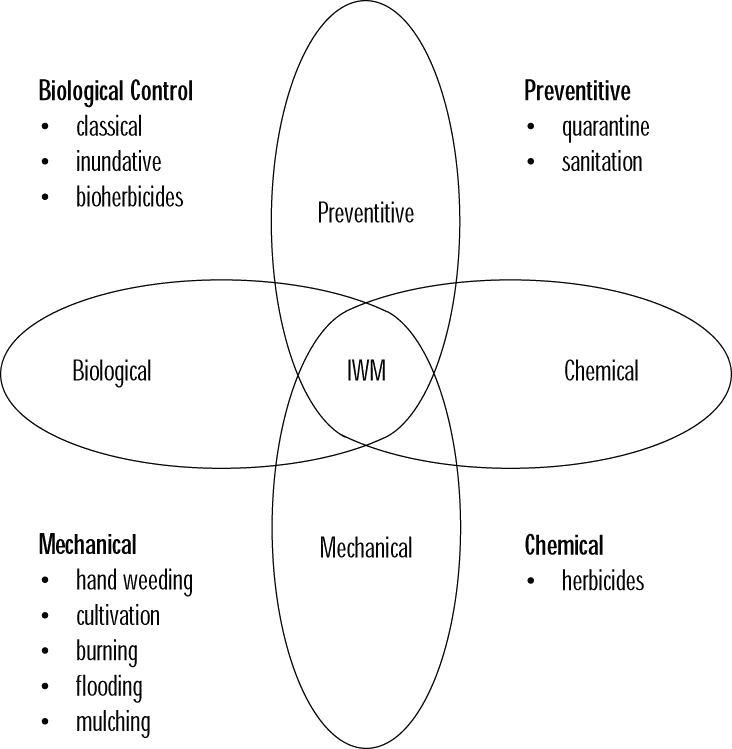Integrated Weed Management is a system that, in the context of the associated environment and the population dynamics of the weed species, utilises all available techniques and methods in as compatible a manner as possible
(See Figure below), and maintains the weed population at levels below those causing economic injury. Therefore, in order to implement
Integrated Weed Management (IWM) programs successfully, it is necessary for the weed scientist to be trained in all aspects of
IWM.
Components of integrated weed management systems

Weed management systems
Western world
At the moment there is too much dependence on chemical control. Herbicides provide effective weed control under a variety of conditions and often allow farmers increased flexibility in the selection of crops, cropping practices, and overall farming operations under many conditions. However, there is now widespread concern about the use of such large amounts of chemicals and the fact remains that they are not absolutely necessary.
Methods for reduced 'herbicide' input
When plants are grown close to each other, they may interact in several ways. In three of the 10 ways they may interact, an adverse effect is observed on the
growth of one or both of the interacting species. These interactions are:
Amensalis, Competition and Parasitism. Amensalism is,
'an interaction in which growth of one is depressed while that of the other is
unaffected'. A type of amensalism is allelopathy, where a plant species releases a chemical that adversely affects the growth of another. Allelopathy is therefore,
'a toxic interaction of plants (including living and decaying tissues) resulting in the reduced growth of one member of the
interaction'. The chemicals can be produced by a number of plant parts including the leaves (washed to the soil), the roots (secreted directly to the soil), or
from decaying tissues such as leaves or roots.
The most commonly produced toxins are phenols and these usually reduce germination or slow growth. An example is the juglone produced by the leaf litter of walnut which prevent seed germination and seedling growth.
Naturally occurring compounds
A naturally occurring compound is one that is biosynthetic or is a breakdown product of a natural compound that could be expected to be found in a natural environment. There is interest in this area because such chemicals prove less time consuming and expensive to register and they are easily and rapidly degraded or detoxified in the environment. Additionally, many phytotoxic natural compounds have chemistries unlike
synthetic herbicides. Thus, study of these compounds may lead to the discovery of new herbicide classes that affect sites of action hitherto untouched by currently used herbicides.
[ Back ] [ Next ]

